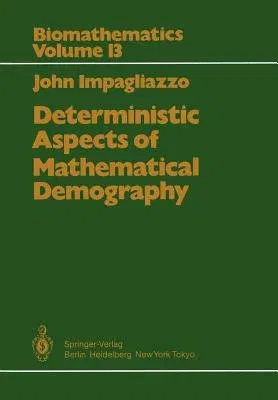J Impagliazzo
(Author)Deterministic Aspects of Mathematical Demography: An Investigation of the Stable Theory of Population Including an Analysis of the Population StatistiPaperback - Softcover Reprint of the Original 1st 1985, 10 January 2012

Qty
1
Turbo
Ships in 2 - 3 days
In Stock
Free Delivery
Cash on Delivery
15 Days
Free Returns
Secure Checkout
Part of Series
Biomathematics
Print Length
188 pages
Language
English
Publisher
Springer
Date Published
10 Jan 2012
ISBN-10
3642823211
ISBN-13
9783642823213
Description
Product Details
Author:
Book Edition:
Softcover Reprint of the Original 1st 1985
Book Format:
Paperback
Country of Origin:
NL
Date Published:
10 January 2012
Dimensions:
24.41 x
16.99 x
1.09 cm
ISBN-10:
3642823211
ISBN-13:
9783642823213
Language:
English
Location:
Berlin, Heidelberg
Pages:
188
Publisher:
Series:
Weight:
331.12 gm

